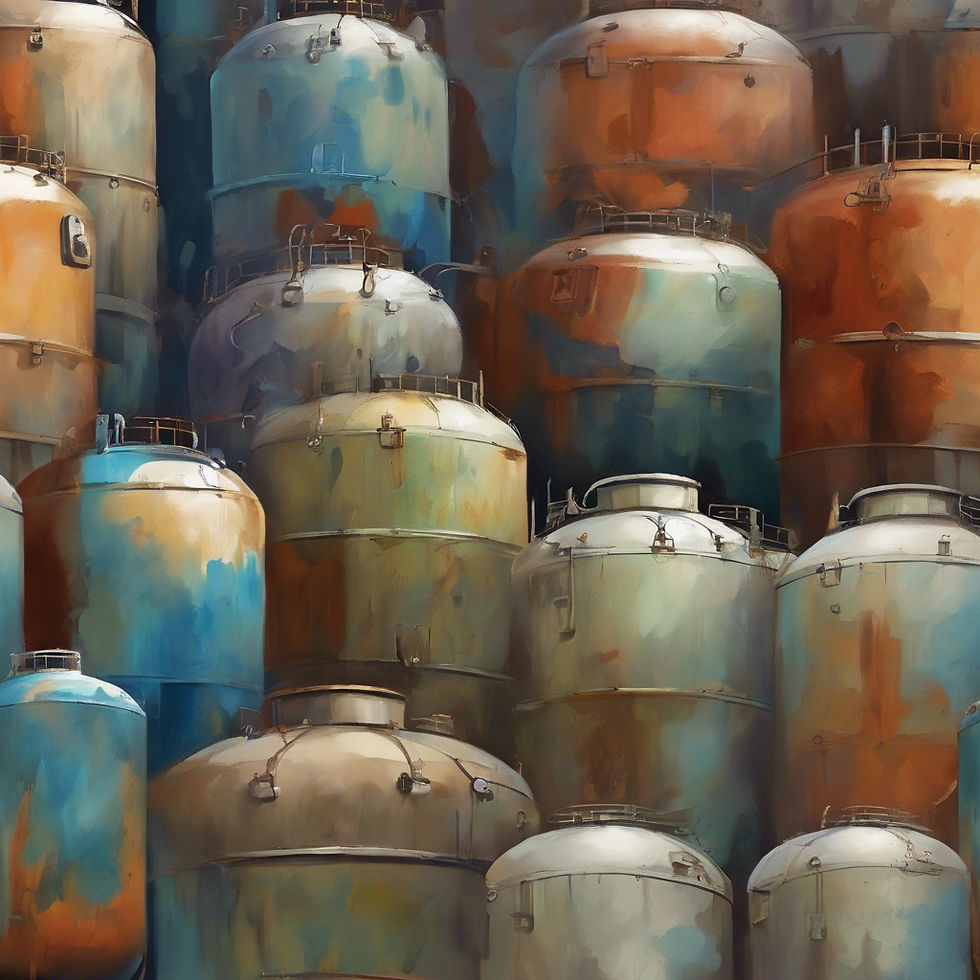Time-Tested Simplicity: Two-Phase Separator
- morgancostigan
- Sep 9, 2023
- 3 min read
In the complex world of oil and gas production, efficiency is king. Ensuring that the valuable hydrocarbons are efficiently separated from water or gas is a critical step in this industry. Enter the unsung hero: the two-phase separator. This unassuming piece of equipment plays a crucial role in separating oil and gas from water and other impurities. Let's delve into the inner workings of this vital component and discover how it performs its magic.
What Is a Two-Phase Separator?
A two-phase separator is a specialized vessel used in the oil and gas industry to separate two phases of fluids: liquid and gas. In most cases, it deals with the separation of oil and gas from water or other impurities. This process is essential because oil and gas typically come out of the ground mixed with water, and separating them is necessary for refining and transportation.
The Key Components
To understand how a two-phase separator works, let's first look at its essential components:
Inlet Section: This is where the mixed fluids enter the separator. The incoming flow is typically high in pressure and contains a mixture of oil, gas, water, and solids.
Gravity Separation Section: Inside the separator, the fluids enter a larger chamber where gravity comes into play. Gravity is the force that causes the different phases to separate based on their densities. The lighter gas rises to the top, while the heavier liquids, including oil and water, sink to the bottom.
Gas Outlet: At the top of the separator, there is an outlet for the separated gas phase. It is essential to release gas efficiently to maintain the desired pressure inside the separator.
Liquid Outlet: At the bottom of the separator, a separate outlet allows for the removal of the separated liquid phase. This phase contains oil and water and requires further processing to separate the oil from the water.
Control Valves and Instruments: These are used to monitor and regulate the flow of fluids and maintain the desired pressure and temperature conditions inside the separator.
The Separation Process
Now that we understand the components let's walk through how a two-phase separator works:
Inlet: The mixture of oil, gas, water, and solids enters the separator under high pressure. The flow is typically turbulent.
Gravity Separation: As the mixture enters the larger chamber, its velocity decreases, allowing gravity to take over. The gas rises to the top while the liquids, including oil and water, settle at the bottom.
Coalescence: Inside the separator, various mechanisms are often employed to enhance separation. For instance, coalescing plates or internals may be used to merge tiny droplets of liquids into larger ones, aiding in their separation. With www.ProductionEquipmentDesign.com, you can easily design your separator with a mesh mist eliminator or a vane pack.
Controlled Release: Control valves and instruments are used to regulate the flow of separated gas and liquid phases, ensuring that the desired pressure and temperature conditions are maintained.
Efficient Separation: Over time, the gas and liquid phases become more distinct, with the gas phase concentrated at the top and the liquid phase at the bottom.
Outlet: The separated gas is released through the gas outlet, while the separated liquids, which include oil and water, are removed through the liquid outlet. Further processing is often required to separate the oil from the water.
The Design Unveiled
In the world of oil and gas production, the efficient separation of valuable hydrocarbons from impurities is nothing short of magic. Two-phase separators are the magician's hat, where the trick takes place. By harnessing the forces of gravity and carefully controlling the flow, these vessels ensure that oil and gas can be harnessed and transported for further processing while leaving unwanted elements behind. In a world where efficiency is paramount, two-phase separators are the unsung heroes that keep the show running smoothly.




Comments